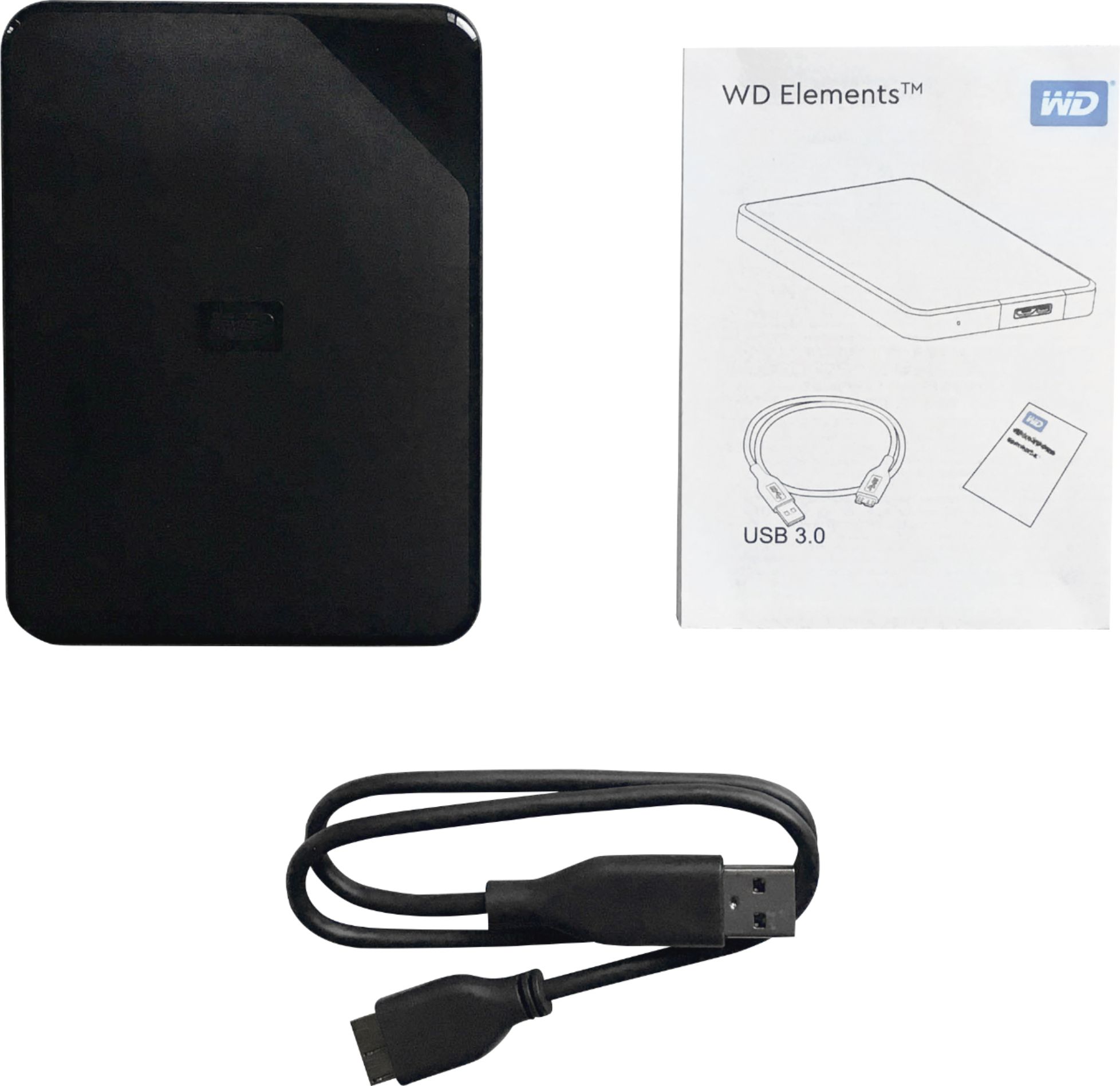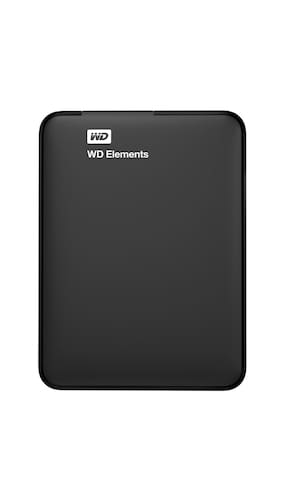
How To Set Up Wd Elements External Hard Drive For Mac
If you read my previous post about how to format an external drive for Mac, you know that I bought a 2TB Seagate Expansion external hard drive and managed to create two partitions on the disk — one for Mac backup purposes, and the other for personal use.
This drive connects directly to your Mac through USB. If you're running a newer computer, you'll see a huge speed increase thanks to USB 3.0. The WD My Book is.
In this article, I’m going to show you how to back up your Mac data to an external drive. You should back up your Mac on a regular basis, especially if you’re planning to perform macOS updates.
I did this several weeks ago while preparing my MacBook Pro for a system update. You may also be interested in taking a look at the macOS Catalina slow issues we encountered during that process just in case you also want to upgrade your Mac to the latest operating system.
Please note that the backup tool that I used is Time Machine, a built-in app provided by Apple. If you want to back up your Mac data without using Time Machine, there are also other third-party Mac backup software worth considering.
Where is Time Machine on Mac?
Time Machine is a built-in app within macOS ever since OS X 10.5. To find it, click on the Apple logo on the top left corner of your screen, then select System Preferences.
In the Preferences Pane, you’ll see the app located between “Date & Time” and “Accessibility”.
What does Time Machine Backup?
Time Machine is the easiest way to back up Mac. And the app is created and recommended by Apple. Once you have a timely backup, it’s incredibly easy to restore all or part of your data in case of accidental deletion or a hard drive crash.
So, what kind of data does Time Machine backup? Everything!
Photos, videos, documents, applications, system files, accounts, preferences, messages, you name it. They all can be backed up by Time Machine. You can then restore your data from a Time Machine snapshot. To do so, first open Finder, then Applications, and click on Time Machine to continue.
Be aware that the recovery process can be only be conducted when your Mac can start up normally.
A Step-by-Step Guide to Backing up Mac to an External Hard Drive
Note: the screenshots below are taken based on an older macOS. If your Mac is running Mojave or Catalina, they will look slightly different but the process should be similar.

Step 1: Connect your external hard drive.
First, use the USB cable (or USB-C cable if you’re on the newest Mac model with Thunderbolt 3 ports) that comes with your external drive to connect that drive to your Mac.
Once the disk icon shows up on your desktop (if it doesn’t, open Finder > Preferences > General, and here make sure you’ve checked “External disks” to let them show on the desktop), move on to Step 2.
Step 2: Select the disk for backup.
Now open Time Machine (I tell you how above) and select the disk you want to use. I have partitioned my Seagate drive into two new volumes, “Backup” and “Personal Use”, as you see from the screenshot. I chose “Backup”.
Step 3: Confirm backup (optional).
If you have used another disk for backup before, Time Machine will ask you whether you want to stop backing up to the previous disk and use the new one instead. It’s up to you. I selected “Replace”.
Step 4: Wait until the process is complete.
Now Time Machine will start to backup all your data. The progress bar gives you an estimate of how much time is left before the backup is complete. I found it a bit inaccurate: Initially, it said “About 5 hours remaining”, but it only took two hours to finish. It’s worth noting that the remaining time may vary from case to case depending on the write speed of your external hard drive.
After about an hour and a half, it says only 15 minutes remaining
Step 5: Eject your external drive and unplug it.
When the backup procedure is completed, don’t rush to disconnect your device as this could cause potential disk problems. Instead, go back to the main desktop, locate the volume that your external hard drive represents, right-click and select Eject. Then, you can safely unplug the device and put it in a safe place.
Final Words
Like any other hardware device, an external hard drive will fail sooner or later. It’s best to make a copy of the data on your external drive — as they say, a “backup of your backups”!
One good option is to use cloud storage services like iDrive which I’ve been using and I really like the app because it’s super easy to use, and it also allows me to download Facebook photos automatically. Backblaze and Carbonite are also popular options in the market, though I am yet to give them a try.
I hope you find this tutorial helpful. I can’t emphasize enough the importance of data backup these days, especially when my mid-2012 MacBook hard drive died all of a sudden. I’ve also seen cases where my friend’s computer and hard drive failed. You can imagine their desperation. Without a proper backup, it’s really hard to restore data. Although you could try a third-party data recovery program, chances are they won’t get all your lost data back.
Anyway, the main takeaway I want you to have from this article is this: back up your Mac with Time Machine or another app, and create a second or third copy of those backups if you can.
When I bought the WD My Passport Ultra drive, I was surprised to see that it didn’t support OS X out of the box. Yes, it had some software specifically made for OS X on it, but even that didn’t help. Turns out, it just wasn’t in the right format. These hard drives are customized to run well on Windows (as you’d expect), and they don’t run well with OS X.
So to get it running, what we’ll need to do is format it in Journaled format, which is OS X only format or MS-DOS (FAT), which means it will run with both OS X and Windows. If you’re only going to be using the hard drive on a Mac, I recommend you stick with Journaled.
Why You Need to Re-Format the External Hard Drive
When I first got the hard drive, I wasn’t able to copy anything over to it (but I was able to copy from it). Disk Utility showed that it was formatted to MS-DOS (FAT) but I’m pretty sure it would have been NTFS instead. If you experience the same issue, your only recourse is to reformat it in one of two formats.
If you’re only going to use the external hard drive with Macs or you want to use it for Time Machine backups, format it in Mac OS Extended (Journaled). If you’re like me who also needs to use at least a part of the hard drive from Windows PCs, you’ll need to choose MS-DOS (FAT) format. But here you won’t get great support for Time Machine. Plus you can’t make partitions bigger than 2 TB or move files larger than 4 GB around.
How to Re-Format the External Hard Drive
First, connect the external hard drive, bring up Spotlight Search by using the keyboard shortcut Cmd + Space and type in Disk Utility. Press Enter and Disk Utility will launch. You can also find it in Utilities folder in Applications. Dolphin emulator download windows 10.
Now, from the left column select 1 TB WD My Passport (or whatever your hard drive name is), and click on the Erase tab.
From here, in Format, select Mac OS Extended (Journaled), give it a name if you want, and click Erase.
You’ll get a warning. Again, click Erase.
In a couple of seconds, you’ll have an OS X ready hard drive to go.
Related: Check out our Ultimate Guide to OS X Yosemite.How to Create Partitions
I’m planning on using my hard drive for both Time Machine backups and to carry media files around. I might need to use the hard drive with Windows computers so I’m going to format one of the partitions as MS-DOS (FAT), fully aware of its limitations. The other one, for Time Machine backups, will be in Mac OS Extended (Journaled) format.
To create a partition, select the hard drive from the left column and click the Partition tab.
From the drop-down below Partition Layout, select the number of partitions you want. Don’t go overboard here.
Now, just below, you’ll see a visual representation of the partitions. You can use the breakpoint to change the size of the partitions by moving it up or down. You can also click on a partition, give it a name and select the format.
Once you’ve decided all the details, simply click the Apply button. From the pop-up, select Partition.
Disk Utility: Check out the two tips for using Disk Utility and 8 ways to free up space on your Mac.What Do You Use It For?
What are you planning on doing with the external hard drive? Time Machine backups perhaps? Or just storing media? Share with us in our forums section.
Also See#backup #hard diskDid You Know
The first Internet Service Provider (ISP) was a company called CompuServe